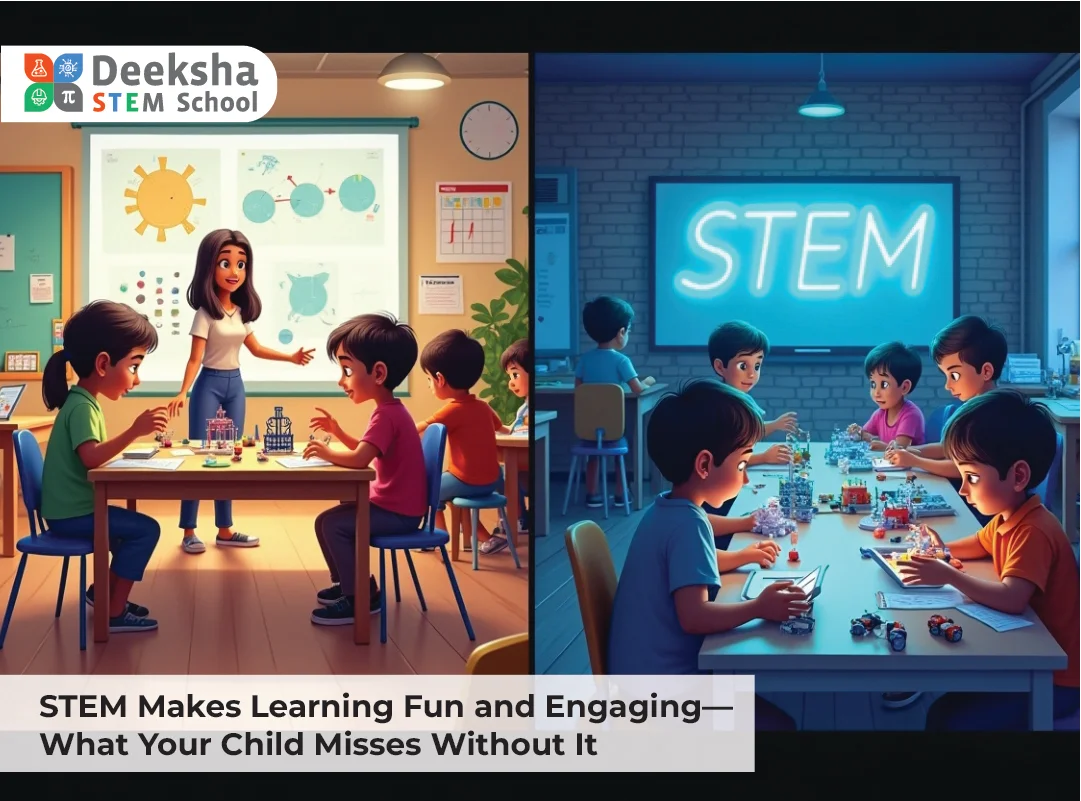Encouraging Girls to Engage in STEM from an Early Age

The underrepresentation of women in STEM fields has been a long-standing issue globally. Early engagement in science, technology, engineering, and mathematics can play a critical role in empowering young girls to break stereotypes and pursue thriving careers in these fields. Here’s how parents, educators, and communities can support and inspire girls to embrace STEM from a young age.
Breaking Gender Stereotypes
Challenge Societal Norms
The stereotype that STEM is a male-dominated field has been ingrained in society for decades, discouraging many girls from pursuing their interests in science, technology, engineering, and mathematics. Challenging these outdated norms requires a concerted effort across various platforms, including schools, homes, and media.
- Showcase Role Models: Highlight stories of successful female scientists, engineers, and innovators, such as Marie Curie, Ada Lovelace, Katherine Johnson, and Dr. Kiran Mazumdar-Shaw. These role models can inspire young girls to imagine themselves as future pioneers in STEM fields.
- Inclusive Media Representation: Advocate for movies, TV shows, books, and advertisements to portray women excelling in STEM careers. Seeing relatable characters in positions of influence can spark interest and ambition in girls from an early age.
- Rethink Classroom Dynamics: Teachers and educators should actively encourage girls to participate in math and science discussions, ensuring they receive equal opportunities to showcase their skills.
- Community Awareness: Engage with parents, educators, and community leaders to dispel misconceptions about STEM being unsuitable for girls. Hosting workshops or talks can create a supportive ecosystem that nurtures girls’ aspirations.
Promote Gender-Neutral Toys and Activities
Toys and activities play a pivotal role in shaping a child’s interests and skills. Historically, toys marketed to boys have emphasized construction, logic, and problem-solving, while those marketed to girls have focused on nurturing and aesthetics. This divide perpetuates stereotypes about gender-specific capabilities.
- STEM-Centric Toys for All: Encourage the use of gender-neutral toys, such as building blocks, robotics kits, science experiment sets, and puzzles, that foster creativity, problem-solving, and analytical thinking in children of all genders.
- Hands-On Learning: Provide opportunities for hands-on exploration through science experiments, coding projects, or DIY engineering kits. These activities not only ignite curiosity but also build confidence in technical skills.
- Equal Access: Ensure that boys and girls are equally exposed to tools like microscopes, telescopes, and chemistry kits in educational and recreational settings.
- Parental Encouragement: Parents should actively promote diverse play options and encourage their daughters to explore STEM-related hobbies, such as programming, robotics, or science fair projects.
- Highlight Benefits: Showcase how these toys and activities cultivate essential skills, such as logical reasoning, teamwork, and critical thinking, which are valuable for all children, regardless of their future career paths.
Providing Role Models and Mentorship
Highlight Female Achievers in STEM
Role models play a crucial part in inspiring young girls to envision themselves in fields traditionally dominated by men. By showcasing the achievements of women who have excelled in STEM, we can fuel curiosity, ambition, and confidence.
- Prominent Figures: Share stories of trailblazing women like:
- Marie Curie, a two-time Nobel Prize winner and pioneer in radioactivity.
- Katherine Johnson, a mathematician whose calculations were critical to NASA’s space missions.
- Ada Lovelace, who is considered the first computer programmer.
- Dr. Kalpana Chawla, the first woman of Indian origin in space.
- Rosalind Franklin, whose work was instrumental in discovering DNA’s double helix structure.
- Incorporate Success Stories in Curriculum: Include biographies and achievements of women in STEM within school textbooks and teaching materials to inspire students during their formative years.
- Interactive Events: Organize guest lectures, webinars, or interactive sessions where students can hear firsthand accounts of challenges and triumphs from female STEM professionals. These events not only provide valuable insights but also humanize the career paths, making them more relatable.
Mentorship Opportunities
A strong support system is vital for young girls navigating the challenges of pursuing a career in STEM. Mentorship programs can provide the guidance and encouragement they need to succeed.
- Connecting with Industry Professionals: Create opportunities for young girls to interact with STEM professionals. Mentors can offer real-world perspectives, share personal journeys, and provide practical advice on overcoming barriers.
- School-Based Programs: Introduce mentorship initiatives within schools that pair students with:
- Industry experts from diverse STEM fields like software engineering, biotech, and robotics.
- College students excelling in STEM disciplines who can serve as relatable role models.
- Building Networks: Encourage participation in programs such as:
- Girls Who Code, which introduces girls to programming and technology.
- STEMinist Movements, which celebrate women in STEM and provide networking opportunities.
- Local STEM Clubs or Meetups, where girls can connect with like-minded peers and mentors.
- Long-Term Support: Emphasize the importance of ongoing mentorship to provide guidance at key educational and career milestones.
Creating Accessible Mentorship Platforms
- Virtual Mentorship: Utilize technology to connect students in remote or underserved areas with mentors through virtual platforms, ensuring accessibility for all.
- Resource Hubs: Develop online portals or mobile apps where girls can access resources, join forums, and seek guidance from a network of female professionals in STEM.
- Community Engagement: Collaborate with local businesses, colleges, and nonprofits to provide mentorship opportunities and resources tailored to girls’ interests and aspirations.
Creating Inclusive Learning Environments
Foster Collaboration and Teamwork
A collaborative learning environment that values every participant’s contributions can create a strong sense of inclusion and empowerment, especially for girls in STEM.
- Group Activities: Design projects and activities that encourage teamwork, allowing students to contribute their unique strengths. Examples include:
- Building and programming a robot as a team.
- Conducting science experiments that require brainstorming and shared responsibilities.
- Developing creative solutions to real-world problems in small groups.
- Opportunities to Lead: Actively provide girls with leadership roles in group settings, such as team captain or project lead, to boost their confidence and demonstrate their capabilities.
- Peer Support Systems: Create peer mentoring programs where students can share knowledge, collaborate on STEM challenges, and support each other’s growth.
- Inclusive Competitions: Encourage participation in STEM competitions that emphasize collaboration, such as hackathons, science fairs, or engineering design challenges, and ensure an equitable environment for all genders.
Train Educators in Bias-Free Teaching
Educators play a pivotal role in shaping students’ perceptions of their abilities and interests. Training teachers to identify and counteract biases is essential for fostering an inclusive classroom.
- Recognize Unconscious Biases:
- Teachers may unconsciously call on boys more often in math and science discussions or assume they are more naturally inclined toward STEM.
- Conduct workshops to help educators recognize and overcome these biases.
- Interactive Training Programs: Provide professional development opportunities focusing on:
- Equitable classroom practices, such as rotating leadership roles during STEM activities.
- Techniques to engage all students, including those who may be less vocal or hesitant.
- Gender-Neutral Feedback: Encourage teachers to provide constructive feedback that focuses on effort, creativity, and problem-solving rather than reinforcing stereotypes about gendered abilities.
- Classroom Policies: Develop policies that promote fairness, such as ensuring equal access to lab equipment, resources, and opportunities to participate.
Use Inclusive Teaching Materials
Representation matters, and diverse teaching materials can help girls feel a stronger connection to STEM fields.
- Feature Diverse Role Models: Use textbooks, videos, and lesson plans that include examples of women and individuals from diverse backgrounds excelling in STEM. This representation helps normalize the idea that STEM is for everyone.
- Real-World Scenarios: Incorporate case studies and examples that relate to issues affecting a wide range of people, such as sustainable energy, healthcare innovations, or environmental conservation.
- Student-Centered Learning: Develop project-based learning assignments that allow students to explore their interests and relate STEM topics to their personal experiences.
- Accessible Resources: Ensure that teaching materials are inclusive and accessible to students of all learning styles, incorporating visual aids, hands-on tools, and digital resources.
Create a Supportive Environment
- Encourage Questions: Foster a classroom culture where all students feel comfortable asking questions and engaging in discussions, regardless of their skill level.
- Celebrate Diversity: Regularly recognize and celebrate the unique contributions of students from different genders, cultures, and abilities in STEM projects and activities.
- Feedback Loops: Implement systems where students can provide feedback on classroom dynamics, ensuring their voices are heard and acted upon.
Encouraging Participation in STEM Activities
Hands-On STEM Workshops
Hands-on learning is one of the most effective ways to engage students, especially in STEM, where practical application enhances understanding and retention. Providing tailored opportunities for girls can make these workshops even more impactful.
- Design Inclusive Workshops:
- Focus on topics that ignite curiosity, such as coding, robotics, AI, renewable energy, and space exploration.
- Ensure workshops are accessible and tailored to different skill levels, from beginners to advanced learners.
- After-School and Summer Programs:
- Offer extracurricular programs that encourage girls to explore STEM without the pressure of grades.
- Examples include coding bootcamps, engineering challenges, and science labs.
- Encourage Experimentation:
- Provide safe and judgment-free spaces where girls can explore, make mistakes, and learn through trial and error.
- Emphasize persistence and resilience by framing failure as a step toward innovation and success.
- Role Model Involvement:
- Invite female professionals or college students to lead workshops, share their experiences, and inspire participants.
Competitions and Clubs
STEM competitions and clubs provide excellent platforms for skill development, teamwork, and real-world problem-solving. They also foster confidence and a sense of belonging in STEM fields.
- Encourage Participation in Clubs:
- Promote STEM-focused clubs in schools, such as robotics teams, coding groups, science clubs, or engineering societies.
- Highlight clubs that provide inclusive environments where girls feel encouraged to take leadership roles.
- Organize Competitions:
- Host events like science fairs, hackathons, and engineering design challenges that inspire creativity and innovation.
- Encourage collaboration and teamwork, ensuring girls have opportunities to take on active and visible roles.
- Celebrate Female Achievements:
- Publicly recognize and celebrate the achievements of girls in STEM competitions, showcasing their success to inspire peers and break stereotypes.
- Share success stories through school newsletters, websites, or social media platforms.
- Provide Mentorship and Guidance:
- Connect girls with mentors during competitions to guide them through technical challenges and boost their confidence.
- Ensure that mentors foster an inclusive and supportive atmosphere.
Incorporate Community and Parental Support
- Involve Parents: Host parent-focused sessions to highlight the importance of encouraging girls to participate in STEM activities. Share resources and ways parents can support their children’s interests at home.
- Collaborate with Communities:
- Partner with local businesses, colleges, and nonprofits to provide resources and funding for STEM programs and activities.
- Establish community events like science exhibitions or maker fairs that engage students and families.
Incentivize Participation
- Scholarships and Rewards:
- Offer scholarships, awards, or recognition for girls excelling in STEM activities to motivate continued participation.
- Create Pathways to Careers:
- Highlight how participation in STEM activities can lead to exciting and impactful career opportunities in fields like technology, engineering, and environmental science.
Leveraging Technology and Media
Use Media to Inspire
Media has the power to shape perceptions and inspire aspirations. By promoting content that highlights women in STEM roles, we can encourage young girls to envision themselves as future innovators and leaders.
- Movies and Documentaries:
- Recommend films such as Hidden Figures (about African-American women mathematicians at NASA) and Picture a Scientist (highlighting gender bias in STEM fields).
- Share inspiring documentaries, like The Code: Silicon Valley and the Remaking of America, which explores the impact of STEM innovations.
- Books and Biographies:
- Promote books that celebrate women in STEM, such as Women in Science: 50 Fearless Pioneers Who Changed the World by Rachel Ignotofsky.
- Introduce biographies of trailblazers like Rosalind Franklin, Dr. Mae Jemison, and Grace Hopper to spark curiosity and ambition.
- Media Campaigns:
- Create or support social media campaigns that highlight achievements of women in STEM, using hashtags like #WomenInSTEM or #GirlsInTech.
- Encourage schools and communities to display posters, videos, or presentations featuring successful female scientists and engineers.
Interactive Learning Tools
Technology offers dynamic and engaging ways for girls to explore STEM fields, helping them build confidence and competence.
- STEM Apps and Platforms:
- Recommend coding platforms like Scratch, Tynker, or Code.org, which provide beginner-friendly programming exercises.
- Introduce virtual science labs, such as Labster or PhET Interactive Simulations, to explore experiments in a safe, hands-on environment.
- Suggest math and logic games, such as DragonBox or Prodigy, to make complex concepts fun and accessible.
- Gamified Learning:
- Encourage gamified platforms that teach STEM concepts through play, such as Minecraft: Education Edition or Kerbal Space Program, which combines problem-solving with creativity.
- Augmented and Virtual Reality:
- Introduce VR experiences that simulate working in space, exploring the human body, or conducting experiments in state-of-the-art labs.
- Use AR tools like Google Expeditions to explore STEM topics interactively, such as renewable energy or artificial intelligence.
Utilize Online Resources
The internet provides a wealth of resources that make STEM exploration exciting and approachable.
- Free Educational Platforms:
- Recommend platforms like Khan Academy, edX, or Coursera for free STEM courses tailored to different ages and skill levels.
- Use YouTube channels like STEMedia or CrashCourse for engaging, bite-sized lessons.
- STEM-Focused Websites:
- Explore NASA’s website for resources on space exploration, including interactive activities and live streams of missions.
- Visit organizations like Girlstart and Girls Who Code for STEM challenges, projects, and mentorship opportunities.
- Interactive STEM Topics:
- Encourage girls to explore cutting-edge subjects like renewable energy, artificial intelligence, and space technology through online simulations and tutorials.
- Use tools like Tinkercad for 3D modeling or Arduino for building electronics to inspire hands-on learning.
Encourage Digital Storytelling
- Create Content:
- Encourage girls to share their STEM journeys through blogs, videos, or podcasts. Platforms like YouTube or TikTok can amplify their stories and inspire peers.
- Social Media Advocacy:
- Use social platforms to celebrate achievements, share resources, and foster discussions about STEM-related topics.
- Interactive Challenges:
- Organize online challenges or competitions where girls can showcase their STEM creations, such as coding projects, engineering designs, or science experiments.
Building Confidence and Resilience
Celebrate Effort and Growth
Confidence is built by recognizing progress, no matter how small, and focusing on the journey of learning rather than just the outcomes. Celebrating effort encourages girls to persist in STEM fields, even when faced with challenges.
- Shift the Focus from Perfection:
- Reinforce that making mistakes is a natural part of learning and innovation.
- Celebrate the process of problem-solving, experimentation, and discovery, even if the final result isn’t perfect.
- Acknowledge Progress:
- Regularly highlight individual and group achievements, such as completing a challenging project, learning a new coding language, or overcoming a difficult math problem.
- Create awards or certificates for milestones like “Best Teamwork,” “Creative Solution,” or “Most Persistent Learner.”
- Highlight Small Wins:
- Recognize incremental improvements, such as mastering a new skill or solving a tough problem after multiple attempts.
- Use positive reinforcement, like verbal praise or visible recognition boards in classrooms or online platforms.
- Use Encouraging Language:
- Praise effort with statements like, “You worked hard on this experiment!” or “I see how much time you put into solving this.”
Encourage a Growth Mindset
A growth mindset fosters the belief that abilities and intelligence can be developed through hard work, persistence, and learning from failures. This mindset is essential for girls to navigate the challenges in STEM fields.
- Teach the Value of Challenges:
- Frame difficult tasks as opportunities for growth, emphasizing that struggling with a concept is part of the learning process.
- Encourage girls to step out of their comfort zones by trying new and challenging activities, such as coding a program or designing a model.
- Promote Resilience through Affirmations:
- Use affirmations to build confidence, such as:
- “Every mistake is a step toward success.”
- “Challenges help you grow stronger.”
- “You haven’t mastered it yet, but you will.”
- Use affirmations to build confidence, such as:
- Provide Examples of Resilience:
- Share stories of successful individuals in STEM who faced setbacks but persevered, such as Thomas Edison’s multiple failures before inventing the lightbulb or Rosalind Franklin’s overlooked contributions to DNA research.
- Encourage Reflection:
- Teach girls to reflect on their experiences by asking:
- “What did you learn from this challenge?”
- “How can you approach it differently next time?”
- Encourage journaling to track their progress, achievements, and the lessons learned from setbacks.
- Teach girls to reflect on their experiences by asking:
Create a Supportive Environment
- Foster Peer Support:
- Build a culture of mutual encouragement where students cheer each other on and celebrate their peers’ efforts and successes.
- Provide Role Models:
- Introduce female STEM professionals who share their personal stories of overcoming challenges and failures to inspire resilience.
- Parental and Teacher Support:
- Educate parents and teachers to focus on praising effort, creativity, and problem-solving rather than only outcomes like grades or test scores.
Implement Growth-Oriented Activities
- STEM Challenges with Multiple Attempts:
- Design activities that allow for trial and error, such as building a bridge with limited materials or creating a working circuit.
- Collaborative Learning:
- Encourage teamwork, where students can share ideas, learn from each other, and build confidence in a supportive group setting.
- Reflection Sessions:
- Hold discussions where students share what they learned from failures and how they plan to improve.
Supporting STEM Education in Schools
Advocate for a Robust STEM Curriculum
At Deeksha STEM Schools, the focus is on creating a strong foundation in science, technology, engineering, and mathematics, integrated seamlessly with the CBSE curriculum. These schools aim to spark curiosity, foster critical thinking, and equip students with skills for future careers in STEM.
- Promote Equal Access:
- At Deeksha STEM Schools, every student, regardless of gender, has access to state-of-the-art STEM facilities, including advanced computer labs, engineering tools, and science equipment.
- The schools advocate for equal representation by promoting gender-neutral enrollment policies in advanced STEM courses, ensuring all students thrive.
- Hands-On and Project-Based Learning:
- Deeksha STEM Schools emphasize experiential learning through activities like lab experiments, coding projects, and engineering challenges, which actively engage students.
- Cross-disciplinary STEM activities are designed to solve real-world problems, combining math, science, and technology to make learning relevant and exciting.
- Incorporate Emerging Technologies:
- The curriculum at Deeksha STEM Schools includes cutting-edge topics like artificial intelligence, robotics, renewable energy, and data science, preparing students for the careers of tomorrow.
- Tools like 3D printers, programming platforms, and virtual labs make the learning process dynamic and interactive.
- Teacher Training Programs:
- Teachers at Deeksha STEM Schools receive professional development to deliver engaging, gender-inclusive STEM lessons.
- Training programs ensure educators address unconscious biases, encouraging equal participation from all students.
Support Initiatives for Girls in STEM
Deeksha STEM Schools are committed to bridging the gender gap in STEM by providing targeted support and fostering an inclusive environment.
- Scholarships and Funding:
- The schools advocate for and promote scholarships or grants for girls to attend STEM camps, competitions, and specialized programs hosted by Deeksha STEM Schools and partner organizations.
- Partnerships with corporations, nonprofits, and government organizations help create funding opportunities for girls in STEM.
- Specialized STEM Camps:
- Summer camps and workshops at Deeksha STEM Schools offer a safe and supportive environment for girls to explore and experiment in STEM fields.
- Recognition Programs:
- To inspire and motivate, the schools celebrate girls’ achievements in STEM through awards like “Outstanding Science Innovator” or “Best Robotics Designer.”
Engage Parents in STEM
Deeksha STEM Schools recognize the vital role parents play in fostering a child’s interest in STEM. The schools actively involve parents in their children’s educational journey.
- Workshops for Parents:
- Schools host sessions for parents to understand the importance of STEM education and provide guidance on how to foster their daughters’ interests at home.
- Workshops highlight simple activities parents can do with their children, such as conducting science experiments or exploring engineering concepts through building kits.
- Resources for Parents:
- Deeksha STEM Schools offer curated resources, including STEM-based toys, books, and online platforms, to encourage at-home learning.
- Interactive family activities, like building solar-powered devices or engaging in DIY robotics, are shared to nurture curiosity and critical thinking.
- Encourage Conversations:
- Parents are taught to use positive language, reinforcing that girls are equally capable in STEM subjects.
- Schools encourage parents to actively engage with their daughters’ STEM projects and aspirations.
Foster a Supportive School Environment
At Deeksha STEM Schools, the environment is tailored to empower students and foster collaboration.
- Create STEM Clubs and Societies:
- After-school clubs focused on coding, robotics, and science innovation are a hallmark of Deeksha STEM Schools. These clubs provide additional opportunities for students to explore STEM in a collaborative setting.
- Leadership opportunities are emphasized, ensuring girls have visible and empowering roles.
- Collaborate with Industry:
- The schools partner with local businesses, universities, and industry leaders to provide internships, mentorship, and guest lectures. These collaborations connect students with real-world STEM applications.
- Monitor Progress:
- Deeksha STEM Schools track enrollment and participation rates of girls in STEM classes, clubs, and competitions to identify gaps and implement strategies for improvement.
Encourage Policy and Advocacy Efforts
As pioneers in STEM education within the CBSE framework, Deeksha STEM Schools actively advocate for inclusive policies and standardized curricula.
- Engage School Boards and Policymakers:
- The schools work with education boards to prioritize STEM education and allocate resources specifically for promoting girls’ participation.
- They collaborate to standardize inclusive STEM curricula and teaching practices.
A Vision for the Future
By advocating for robust STEM curricula, providing financial and institutional support, and engaging parents, Deeksha STEM Schools create an empowering ecosystem where girls can thrive. The commitment to fostering equal opportunities ensures that every student, regardless of gender, is inspired to explore, innovate, and excel in the dynamic world of STEM.
Conclusion
Encouraging girls to engage in STEM from an early age is essential for closing the gender gap in science and technology. By breaking stereotypes, offering mentorship, and fostering inclusive learning environments, we can inspire the next generation of female innovators and leaders. Together, let’s ensure that every girl has the opportunity to explore her potential and thrive in the dynamic world of STEM.



